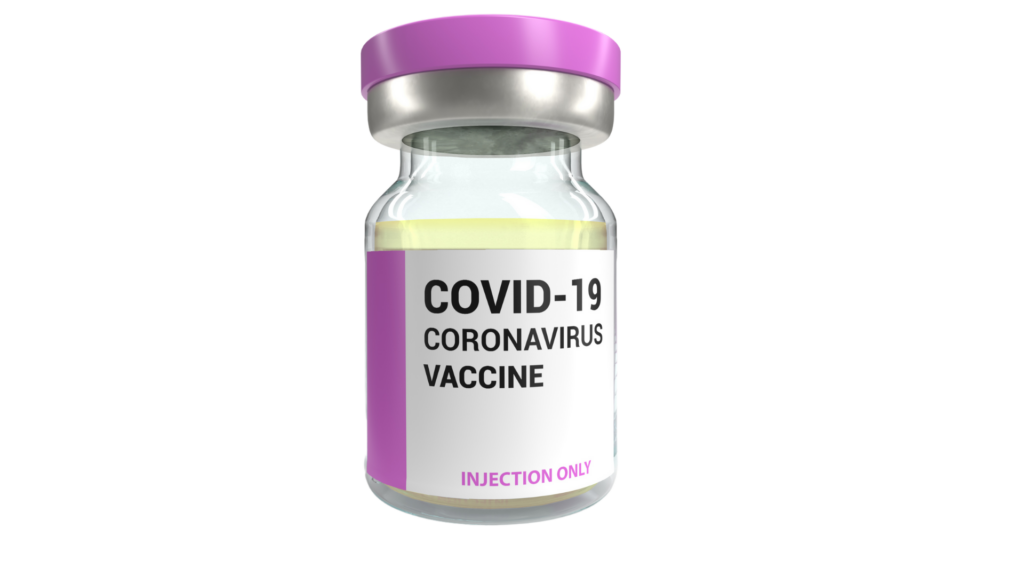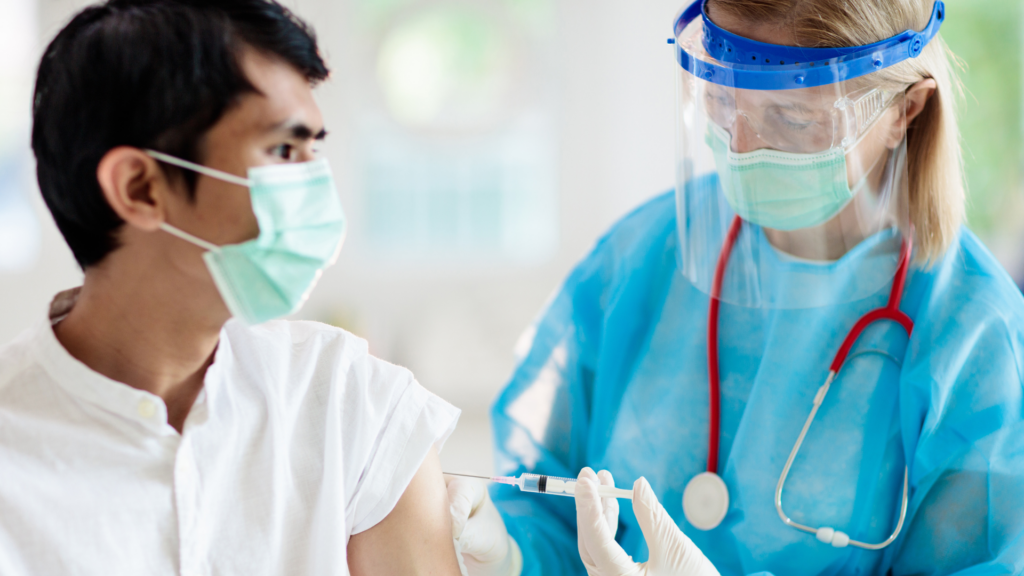COVID-19 Vaccines and What They Could Mean for the Future
Since COVID-19 vaccines started to roll out in January, many Americans have eagerly learned about the three vaccines authorized for use in the US, devouring statistics, fact sheets, and updates from the FDA. Some people may even be able to tell you that Moderna1 and Pfizer2 are RNA vaccines and that Johnson & Johnson3 is a viral vector vaccine. But what do those terms actually mean? And what do the COVID vaccines mean for the future of vaccine research?

Traditional viral vector vaccines have been in use since the 1970s4. They utilize a virus that has been engineered to be harmless, referred to as a viral vector, to inject your body’s cells with DNA from the target virus. That DNA is then transported to the cell’s nucleus, where it provides instructions to make a surface protein from the original virus; in this case, the infamous spike protein from the SARS-CoV-2 virus. The DNA is transcribed into RNA, which is translated into protein and then transported and fixed to the surface of the cell. Your body’s immune system then kicks into gear, racing to manufacture a response to this new threat, which it will keep around, just in case those proteins are detected again. Dr. Jennifer Pancorbo5, a professor at North Carolina State University and Director of Industry Programs and Research at NC State’s BTEC program, referred to this strategy as a “Trojan horse approach.”
Because viral vector vaccines are an established vaccine delivery platform, the process of designing them is relatively formulaic, Dr. Pancorbo said. Researchers need to select an appropriate viral vector, decide on a DNA sequence to use for the protein of interest, and then conduct tests to ensure that the vaccine works the way they intend it to. When deciding which viral vector to use for their vaccine, researchers try to choose an uncommon virus, most often found in animals. This is because many people have formed an antivector immune response against more common viruses, such as those that have been used in earlier vaccines. This means they may not have a robust response to the new vaccine due to the immune system attacking the vectors before they can deliver their message to the host cells. The vector that researchers ultimately decide to use is a harmless virus, which is able to function the way a dangerous one would, but will not harm your body. When selecting a DNA sequence for their desired protein, researchers try to find a sequence that produces an optimized protein, which may be difficult, given the many small variations that can be made to change its shape. A lot of biochemical research and analysis is involved in the design process. It’s important to note that the selected sequence is not randomly grafted onto a chromosome; rather, it is transcribed into RNA alongside but separate from the cell’s native genome, and those cells are typically destroyed by the immune system in the process.
Though the final step of each vaccine type (protein synthesis) is nearly identical, mRNA vaccines use a very different delivery system. “There are inherent advantages to this approach, but there was a lack of clarity about how to proceed,” said Dr. Arnab Sengupta, a postdoctoral instructor in the Biotechnology Program at NC State. “mRNA molecules can be more delicate than other vaccine delivery systems,” he said, “because they aren’t meant to be floating around in your bloodstream, so they are often broken down by internal mechanisms.” To stabilize the mRNA particles for delivery to your cells, researchers encapsulated them in a lipid nanoparticle, which is essentially a very small glob of fat. These nanoparticles are able to travel across the cell membrane, whereupon they open and release the mRNA. Then, “Your own ribosomes and your own translation factors will be recruited in order to manufacture the spike protein,” Dr. Sengupta said. Once the spike protein has been made, it is presented to the immune system, which responds in the same way it would to the viral vector vaccine.
Both vaccine types take advantage of your cells’ machinery to manufacture the protein, after which the immune system steps in to begin manufacturing antibodies. Once the protein is presented, the immune system uses B cells and T cells to begin working on antibody production. But in order for those B cells and T cells to receive the spike protein, an intermediary called the major histocompatibility complex (MHC) needs to be present to help the exchange between cells. The exchange of protein from the infected cell to an immune cell is a well-regulated process, but sometimes a substance called an adjuvant is added to a vaccine to help make this process more effective. One hypothesis suggests that the manufactured spike protein may help improve the immune response, acting as an adjuvant in this exchange6, according to Dr. Pancorbo. If this hypothesis proves true, it could mean that the body’s own immune response works to make future antibody production more efficient.
So if both types of vaccines build up to the same end step, why are mRNA vaccines being lauded as such significant innovations? Though the necessary technology has been around for several years now, these are “the first prominent mRNA vaccines,” according to Dr. Sengupta. “For traditional pathogens, like the flu virus, mRNA technology has not been very effective,” Dr. Pancorbo added. But the mRNA vaccines for SARS-CoV-2 have been extremely successful. Dr. Sengupta explained: “I’m not saying that mRNA vaccines will be viable in every case, but Pfizer and Moderna’s success is promising for future vaccines.” Though these vaccines still aren’t supplying the target protein (the spike protein, in this case) directly to your cells, mRNA vaccines bypass the need to transcribe DNA into RNA, and instead only need to translate the RNA into protein. “The main advantage of RNA vaccines is that they have a relatively faster effect than DNA-based vaccines,” Dr. Sengupta said. Additionally, cutting out transcription reduces the likelihood of mutations in the final protein product. Most mutations wouldn’t be directly harmful to the vaccine recipient, but they would lower the immune response, because there would be fewer functional proteins for the B and T cells to respond to. mRNA vaccines are also faster and cheaper to produce than viral vectors, allowing a quicker response to emerging viral threats.

While all three vaccines achieve nearly the same outcome, slight differences in efficacy have been reported. Though each vaccine is much more effective than was previously dreamt of, Dr. Pancorbo does say that the difference in efficacy between Johnson & Johnson and the two mRNA vaccines is statistically significant. However, she clarified: “Efficacy is a surrogate score determined by testing antibody levels.” This means it’s not a direct indication of how well the vaccines work, and someone could still develop a bad case of COVID-19 even with high antibody levels. The variations in efficacy are still not well understood, but one potential reason is that the spike encoded in the Johnson & Johnson vaccine has to undergo more steps in order to reach the final product, allowing more time for mutations. Dr. Pancorbo also stressed that the Johnson & Johnson vaccine only uses one shot, while Moderna and Pfizer each use two shots. Further research relating to the antibody response to each vaccine, as well as whether booster shots are helpful, will allow scientists to gain a better understanding of how effective the vaccines are.
The success of mRNA vaccines against COVID-19 opens up new questions about how they could be used in later contexts. As a field, “mRNA therapeutics are heading toward an interesting future,” Dr. Sengupta said. For example, a potential application related to his own research interests is the possibility of using molecular switches7 to turn vaccines on and off as needed. While this possibility is still quite far out, with most studies in the early stages, it could open a whole new world of possibilities when it comes to vaccine dynamics and administration. It could also be game-changing in the broader world of therapeutics, with potential applications for everything from cancer immunotherapeutics to cardiovascular disease. “There are many checks and balances that go into regulating protein production,” he said, “But there are advantages to being able to control protein levels at certain times.” For example, in a disease caused from deficiency in a certain protein where patients need to manufacture more protein, but shouldn’t exceed a certain amount.
The COVID-19 pandemic is one of the first times the eyes of the public have been so firmly fixed on the process of scientific innovation. While this has created and continues to create problems in the form of vaccine hesitancy and skepticism, the public messaging strategies surrounding vaccine development will continue to be useful in future public health crises. The pandemic has also impacted the way that public officials and even scientists themselves think about vaccine development. Dr. Pancorbo says she believes that this ongoing experience will make officials more “open minded” and willing to “innovate” moving forward. Because viral vector vaccines and mRNA vaccines use parallel pipelines, this multi-vaccine platform approach will allow for a more flexible response to future outbreaks. For example, the Johnson & Johnson vaccine can be stored at higher temperatures than the Pfizer or Moderna vaccines, making them ideal for rural areas with less access to specialized storage freezers. And it would be helpful if researchers could design more accessible ways to administer the vaccines, such as a patch you pick up from your local convenience store and apply to your arm. Dr. Pancorbo concluded, “I think this is really going to convince governments that vaccine technology is worth investing in.”
References:
- Centers for Disease Control and Prevention. (2021, August 23). Administration overview for Moderna Covid-19 Vaccine. Centers for Disease Control and Prevention. Retrieved September 23, 2021, from https://www.cdc.gov/vaccines/covid-19/info-by-product/moderna/index.html.
- Centers for Disease Control and Prevention. (n.d.). Pfizer-BioNTech COVID-19 Vaccine overview and safety. Centers for Disease Control and Prevention. Retrieved September 23, 2021, from https://www.cdc.gov/coronavirus/2019-ncov/vaccines/different-vaccines/Pfizer-BioNTech.html.
- Centers for Disease Control and Prevention. (n.d.). Johnson & JOHNSON’S Janssen Covid-19 Vaccine overview and safety. Centers for Disease Control and Prevention. Retrieved September 23, 2021, from https://www.cdc.gov/coronavirus/2019-ncov/vaccines/different-vaccines/janssen.html.
- Centers for Disease Control and Prevention. (n.d.). Understanding viral vector covid-19 vaccines. Centers for Disease Control and Prevention. Retrieved September 14, 2021, from https://www.cdc.gov/coronavirus/2019-ncov/vaccines/different-vaccines/viralvector.html#:~:text=Scientists%20began%20creating%20viral%20vectors,and%20published%20around%20the%20world.
- BTEC, N. C. S. U. (n.d.). Jennifer Pancorbo, PH.D. BTEC. Retrieved September 23, 2021, from https://www.btec.ncsu.edu/academic/faculty/dr-jennifer-pancorbo.php.
- Heinz, F. X., & Stiasny, K. (2021, August 16). Distinguishing features of CURRENT COVID-19 vaccines: Knowns and unknowns of antigen presentation and modes of action. Nature News. Retrieved September 14, 2021, from https://www.nature.com/articles/s41541-021-00369-6#Sec2.
- Nature Publishing Group. (n.d.). Nature news. Retrieved September 24, 2021, from https://www.nature.com/scitable/topicpage/riboswitches-a-common-rna-regulatory-element-14262702/.